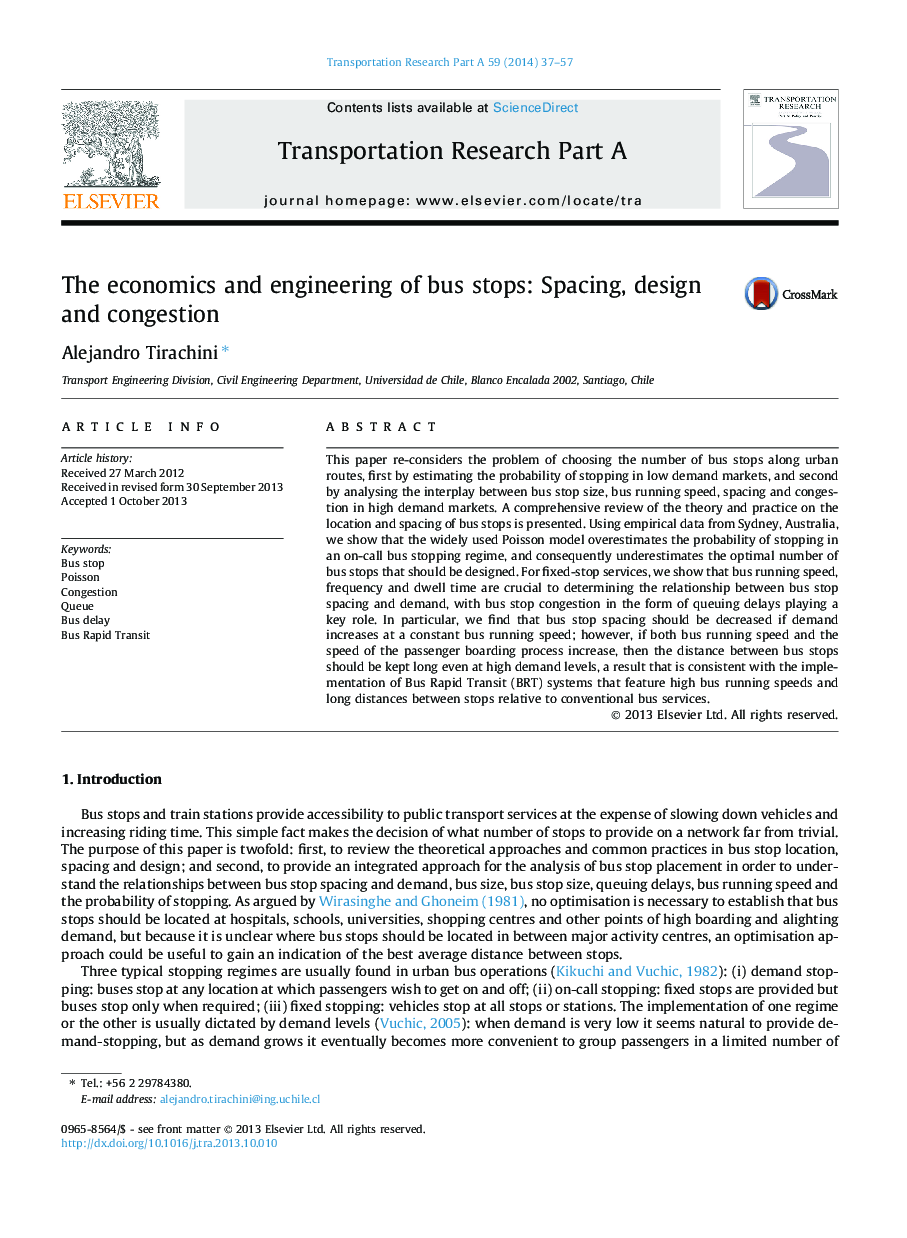| Article ID | Journal | Published Year | Pages | File Type |
|---|---|---|---|---|
| 311240 | Transportation Research Part A: Policy and Practice | 2014 | 21 Pages |
•We re-consider the problem of choosing the number of bus stops along urban routes.•The widely used Poisson model overestimates the probability of stopping at bus stops.•Bus stop congestion and running speed have a key role for optimal bus stop spacing.•Provision of busways and cashless fare payment imply long optimal bus stop spacing.
This paper re-considers the problem of choosing the number of bus stops along urban routes, first by estimating the probability of stopping in low demand markets, and second by analysing the interplay between bus stop size, bus running speed, spacing and congestion in high demand markets. A comprehensive review of the theory and practice on the location and spacing of bus stops is presented. Using empirical data from Sydney, Australia, we show that the widely used Poisson model overestimates the probability of stopping in an on-call bus stopping regime, and consequently underestimates the optimal number of bus stops that should be designed. For fixed-stop services, we show that bus running speed, frequency and dwell time are crucial to determining the relationship between bus stop spacing and demand, with bus stop congestion in the form of queuing delays playing a key role. In particular, we find that bus stop spacing should be decreased if demand increases at a constant bus running speed; however, if both bus running speed and the speed of the passenger boarding process increase, then the distance between bus stops should be kept long even at high demand levels, a result that is consistent with the implementation of Bus Rapid Transit (BRT) systems that feature high bus running speeds and long distances between stops relative to conventional bus services.
